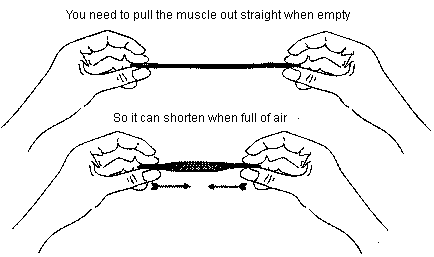 Figure 1
Figure 1The air muscle lends itself to robotics and automation. In some cases it can replace servo's and DC motors. Its unique properties, lightweight, strong and pliable can be capitalized in many applications and used to improve existing pneumatic designs. In a nutshell, the air muscle may be used in many applications that requires linear or contractive motion. In many cases pneumatic cylinders can be replaced.
How the Air Muscle Works
The air muscle looks like a long tube constructed out of black plastic mesh. Inside of it is a soft rubber tube. Metal clips are fastened of each end. The plastic mesh is formed into loops on each end, tucked into and secured by the metal clips. The loops are used for fastening the air muscle to devices. When the air muscle is pressurized, the soft inner tube expands. The inner tube pushes against the black plastic mesh which also expands. As the plastic mesh expands it shortens in response to the expansion. This causes the overall length of the air muscle to contract.
To operate properly, it is important that the air muscle be in a stretched or pulled out when it's deactivated or in a resting state. If not, there will not be any movement or contraction when it is activated, see figure 1. When air pressure is applied the muscle contracts.
 Figure 1
Figure 1